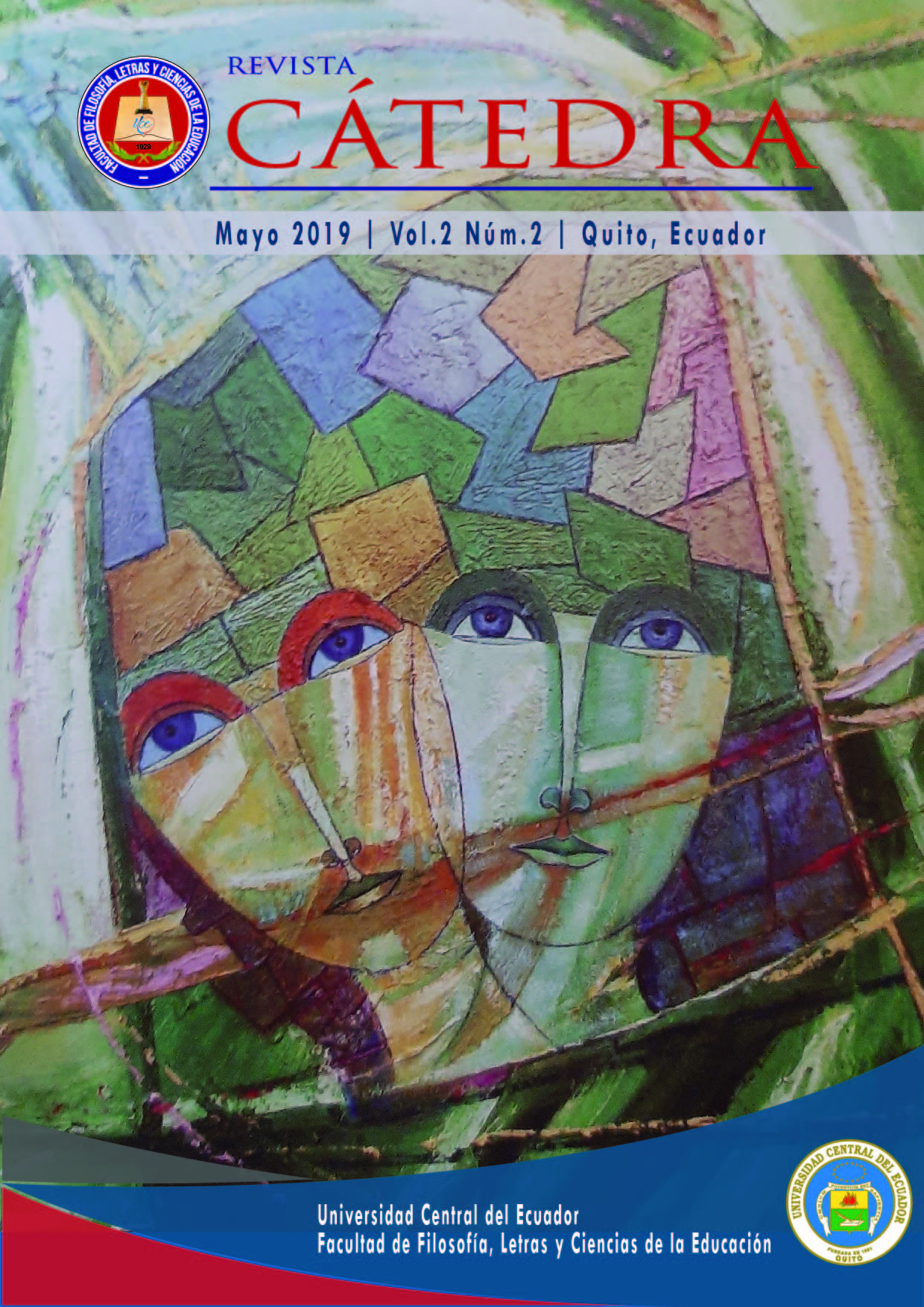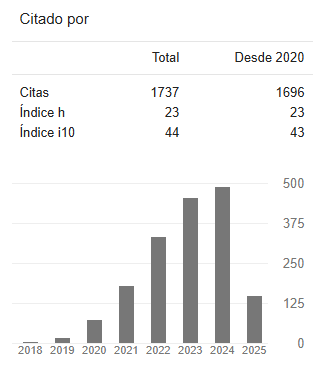Accessibility analysis of the web portals of the educational institutions in Cuenca, Ecuador
DOI:
https://doi.org/10.29166/catedra.v2i2.1646Keywords:
web accessibility, disabilities, education, educational inclusion, WCAG 2.0.Abstract
This article shows the accessibility analysis of the websites of the educative institutions of Cuenca - Ecuador. The purpose of the research is to evaluate the accessibility of the websites with the Web Content Accessibility Guidelines (WCAG) 2.0 with a level of compliance A and analyze their regulatory compliance. Experiences and results of web accessibility research were investigated from a review of different bibliographic sources. The results obtained from the accessibility of 191 Web pages analyzed using the online tools Examiner, TAW, Markup Validation Service and CSS Validation Service are presented. Among the results, it is observed that it is necessary to correct errors in all the analyzed Web portals of the educational institutions of Cuenca. In order to establish the compliance level, the icons certifying the accessibility of the sites by the World Wide Web Consortium (W3C) in HTML, CSS and their conformity levels A, AA and AAA are verified. With the data obtained from the evaluation of the automatic tools, it is corroborated the compliance level of the success criteria of the WCAG 2.0 with a conformity level A. It is concluded that it is necessary to correct errors in all the web portals analyzed of the educational institutions of Cuenca. For the average number of errors found, it is more feasible for educational institutions to redesign their web portals in order to comply with the WCAG 2.0. They can also improve the fulfillment of the WCAG 2.0, with a hard work of revising and correcting the source code of their web portals.
Downloads
References
Acosta, T., y Luján-Mora, S. (2017). Análisis de la accesibilidad de los sitios web de las universidades ecuatorianas de excelencia. Enfoque UTE, 8(1), págs. 46-61. doi:10.29019/enfoqueute.v8n1.133
Acosta-Vargas, P., Acosta, T., y Luján-Mora, S. (2018). Challenges to Assess Accessibility in Higher Education Websites: A Comparative Study of Latin America Universities. IEEE Access, 6, págs. 36500-36508. doi:10.1109/ACCESS.2018.2848978
Acosta-Vargas, P., Luján-Mora, S., y Salvador-Ullauri, L. (2016). Evaluation of the web accessibility of higher-education websites. 15th International Conference on Information Technology Based Higher Education and Training (ITHET), (págs. 1-6). Estambul. doi:10.1109/ITHET.2016.7760703
Acosta-Vargas, P., Luján-Mora, S., y Salvador-Ullauri, L. (2017). Web accessibility polices of higher education institutions. 16th International Conference on Information Technology Based Higher Education and Training (ITHET), (págs. 1-7). Ohrid. doi:10.1109/ITHET.2017.8067808
Amado-Salvatierra, H., Linares, B., García, I., Sánchez, L., y Rios, L. (2012). Análisis de Accesibilidad Web y Diseño Web Accesible para instituciones socias del proyecto ESVI-AL. Actas del IV Congreso Internacional sobre Aplicación de Tecnologías de la Información y Comunicaciones Avanzadas, (págs. 54-61). Obtenido de http://citeseerx.ist.psu.edu/viewdoc/download?doi=10.1.1.679.9927&rep=rep1&type=pdf#page=55
Arasid, W., Abdullah, A. G., Wahyudin, D., Abdullah, C. U., Widiaty, I., Zakaria, D., . . . Juhana, A. (2018). An Analysis of Website Accessibility in Higher Education in Indonesia Based on WCAG 2.0 Guidelines. {IOP} Conference Series: Materials Science and Engineering. 306, págs. 1-8. {IOP} Publishing. doi:10.1088/1757-899x/306/1/012130
Banco Mundial. (2011). Informe mundIal la dIscapacIdad. Educación, 218(219), 219. Obtenido de http://www.who.int/disabilities/world_report/2011/summary_es.pdf
Campoverde-Molina, M. (2016). La accesibilidad web. Un reto en el entorno educativo ecuatoriano. Revista Científica y Tecnológica UPSE, III(3), págs. 90-98.
Campoverde-Molina, M., Vizñay-Durán, J., y Reyes-Espinosa, D. (2016). Accesibilidad web en las instituciones de salud de la ciudad de Cuenca. Análisis preliminar. IV Conferencia Internacional sobre Aplicación de Tecnologías de la Información y Comunicaciones para mejorar la Accesibilidad (ATICAcces 2016), 1, págs. 125-132. Cuenca.
Confederación de Empresarios de Andalucía. (2010a). Accesibilidad Web. Obtenido de http://webaccesible.cea.es/?q=nivelesWCAG20
Confederación de Empresarios de Andalucía. (2010b). Herramientas de evaluación automáticas. Obtenido de http://webaccesible.cea.es/?q=automaticas
Consejo Nacional para la Igualdad de Discapacidades. (2015). Estadística personas con discapacidad. Obtenido de http://www.consejodiscapacidades.gob.ec/wp-content/uploads/downloads/2015/09/estadistica_conadis.pdf
Consejo Nacional para la Igualdad de Discapacidades. (2019). Estadísticas de Discapacidad. Obtenido de https://www.consejodiscapacidades.gob.ec/estadisticas-de-discapacidad/
Instituto Ecuatoriano de Normalización. (2014). Tecnología de la información - Directrices de accesibilidad para el contenido web del W3C (WCAG) 2.0. Obtenido de https://drive.google.com/file/d/0Bxl4LLo2QyyJMmZDNGwzWEdHMGc/view
Instituto Ecuatoriano de Normalización. (2016). Reglamento técnico ecuatoriano RTE INEN 288 “accesibilidad para el contenido web”. Obtenido de https://drive.google.com/file/d/0Bxl4LLo2QyyJdURfOHViRGpCNFU/view
International Organization for Standardization. (2012). Information technology -- W3C Web Content Accessibility Guidelines (WCAG) 2.0. Obtenido de https://www.iso.org/standard/58625.html
Luján-Mora, S. (2018a). Herramientas de revisión automática de la accesibilidad web. Obtenido de http://accesibilidadweb.dlsi.ua.es/?menu=hr-revision-automaticas
Luján-Mora, S. (2018b). Principios y directrices de WCAG 2.0. Obtenido de http://accesibilidadweb.dlsi.ua.es/?menu=principios-2.0
Ministerio de Educación del Ecuador. (2018). AMIE (Estadísticas educativas a partir de 2009-2010). Obtenido de https://educacion.gob.ec/amie/
Naciones Unidas. (2006). Convención sobre los derechos de las personas con discapacidad. Obtenido de http://www.un.org/disabilities/documents/convention/convoptprot-s.pdf
Network Information Center. (2019). Tipos de dominios. Obtenido de https://www.nic.ec/content.php?action=mypages&page=TipoDominios.html
Ortiz Ruiz, Y. T. (2019). Accesibilidad en sitios web del Ministerio de Educación de Chile. Tendencias Pedagógicas, 33(2019), págs. 99-116.
Rahim Wan Mohd Isa, W. A., Hakim Suhaimi, A. I., Ariffrn, N., Fatimah Ishak, N., y Mohd Ralim, N. (2016). Accessibility evaluation using Web Content Accessibility Guidelines (WCAG) 2.0., (págs. 1-4). Melaka. doi:10.1109/IUSER.2016.7857924
Rodríguez V., L., Rosas Chávez, P., y Suárez Naranjo, C. (2019). Análisis comparativo de usabilidad en los sitios web de las universidades públicas de la ciudad de Riobamba - Ecuador. Atlante: Cuadernos de Educación y Desarrollo, febrero, págs. 1-14.
Sam-Anlas, C. A., y Stable-Rodríguez, Y. (2016). Evaluación de la accesibilidad web de los portales del Estado en Perú. Revista Española de Documentación Científica, 39(1), págs. 1-15.
Stamford Interactive. (2012). WCAG 2.0 Map. Obtenido de https://www.digitalpulse.pwc.com.au/wp-content/uploads/2014/08/WCAG20Map.pdf
World Wide Web Consortium. (2006). Web Accessibility Evaluation Tools List. Obtenido de https://www.w3.org/WAI/ER/tools/
World Wide Web Consortium. (2008). Web Content Accessibility Guidelines (WCAG) 2.0. Obtenido de http://www.w3.org/TR/WCAG20/
World Wide Web Consortium. (2015). Introducción a la Accesibilidad Web. Obtenido de https://www.w3c.es/Traducciones/es/WAI/intro/accessibility
World Wide Web Consortium. (2018). Web Content Accessibility Guidelines (WCAG) 2.1. Obtenido de https://www.w3.org/TR/WCAG21/
Downloads
Published
Versions
- 2020-09-03 (2)
- 2019-05-29 (1)









